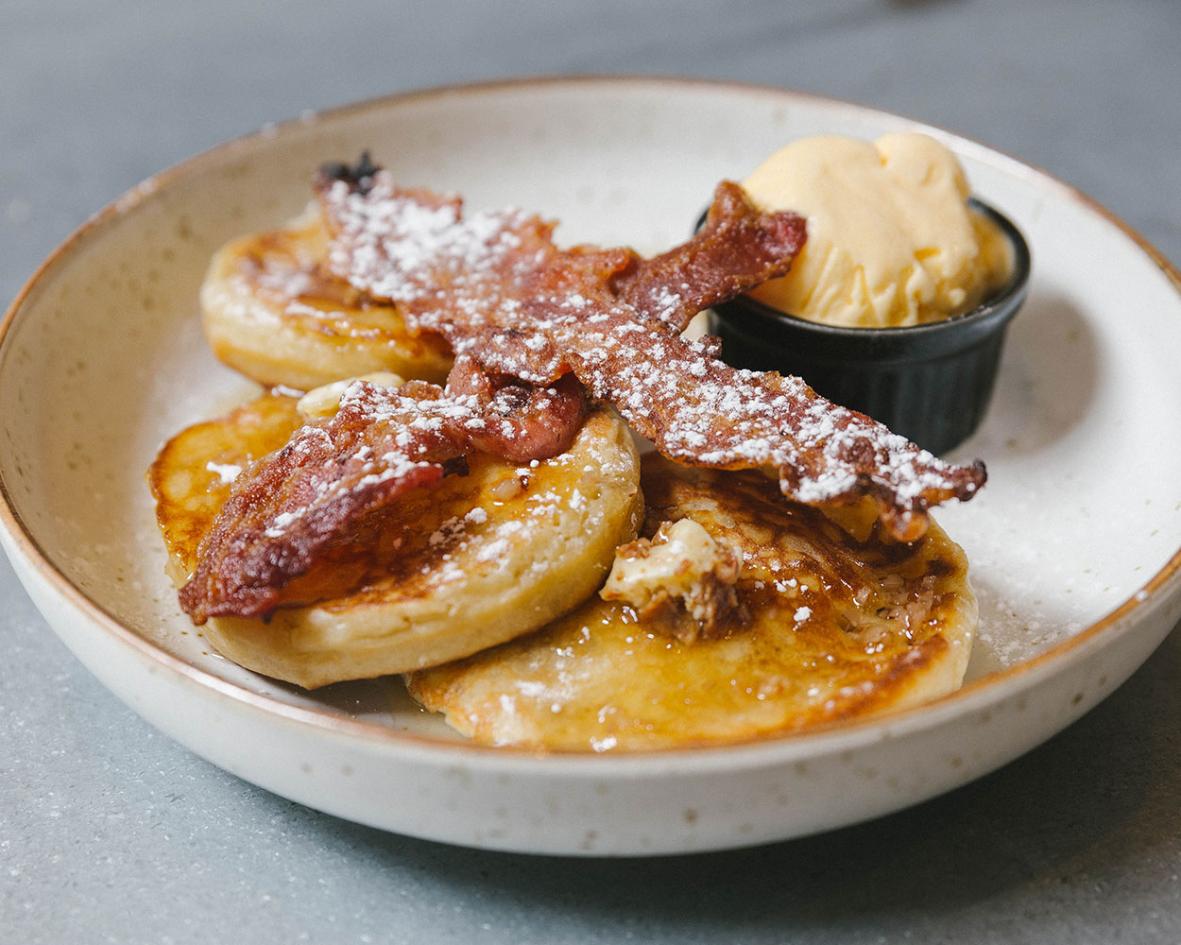Similar to how we celebrate Pancake Day in the UK, Canadians mark the last day of indulgence before Lent with some tasty pancakes before giving up meat and dairy for the 40 days of Lent.
Where we do differ in traditions is with the toppings. While we may be inclined to our usual lemon and sugar flavour, Canadians usually opt for pancakes drenched in sweet maple syrup or partridgeberry jam and sausages.
Another tradition that we differ in is that Canadians enjoy adding an extra special ingredient to their pancake batter. However, it’s not as tasty as you think, as they add small objects (after they’ve been thoroughly cleaned of course) such as buttons, rings, and coins.
Each object has a special meaning, for example, if you find a shiny coin in your pancake, you’re deemed very lucky and will end up rich! However, if you bite down on a button, you’re not so lucky and destined to be a seamstress or tailor and work hard for several years to come.
A popular Lithuanian festival that goes by the name Uzgavenes, has the literal translation of ‘the time before Lent’. The main festival takes place on Shrove Tuesday and is a time of celebration filled with delicious food, superstitions, pranks, and tonnes of humour, before the great fast commences the following day.
Lithuanian’s go all out for this festival, dressing up as witches, devils, goats, and beggars. They also fashion wooden scary-looking masks to frighten the upcoming winter. The day is filled with singing and laughter whilst pulling pranks on one another for extra entertainment.
Those taking part in the festivities are also encouraged to wonder around begging for money and pancakes, a bit like how we celebrate Halloween.
Another big part of the festival fun is indulging in potato pancakes, boiled pork and donuts in excess. In fact, Lithuanian’s make it a priority to eat as much as they can on this day, sometimes up to 12 meals, in preparation for the great fast that follows.
The last day before Lent in Denmark is marked by stores all over the country filling their windows with wooden barrels, toy cats and an abundance of freshly baked buns. These delicious golden buns are filled to the brim with an assortment of sweet fillings like melted milk chocolate, whipped cream, and strawberry jam. This is to celebrate Fastenlavn, Denmark’s version of Pancake Day.
Traditionally, Fastenlavn was a day to indulge in dairy foods and sweet treats before giving it all up for Lent. Fast forward a few years, Fastenlavn is now a day for kids to dress up as their favourite characters and hit the cat out of the barrel.
Yes, you heard right. Hitting the cat out of the barrel is carried out on Fastenlavn as an old Danish tradition and is done to scare ‘evil’ cats (that often slept in barrels) away from town.
These days things are a bit different; a cardboard box is used instead of a barrel and sweets instead of a cat. The boy or girl that can bash the most sweets out are crowned Cat King and Cat Queen.
Shrove Tuesday dates all the way back to the 17th Century in Poland where people would indulge in vodka, lard, and bacon for a full week before fasting for Lent, calling it their ‘fat week’.
Nowadays, the Polish don’t push their health to such extremes and only feast on indulgent foods for one day, Fat Thursday.
Fat Thursday is celebrated on the final Thursday before Lent and is a day for the Polish to feast on nalesniki (pancakes), chrusciki (pastries), and paczki (jam-filled donuts) for the entire day. Fat Thursday is one of the busiest days of the year in Poland, with bakeries open for longer hours to prepare for the consumption of more baked goods.
It is believed that an average Polish person will eat at least three donuts during Fat Thursday, as well as other tasty treats.



